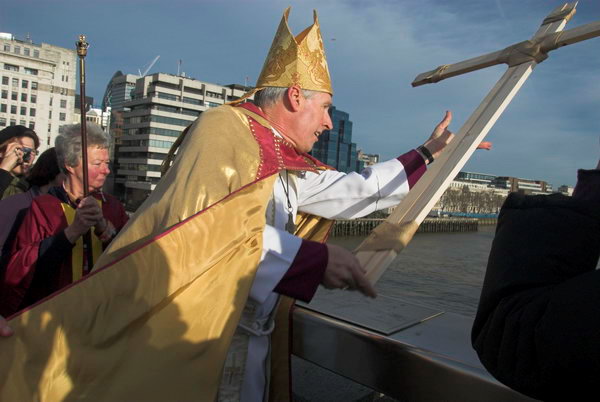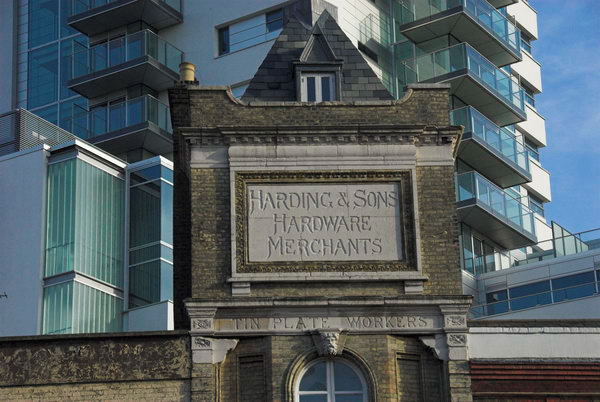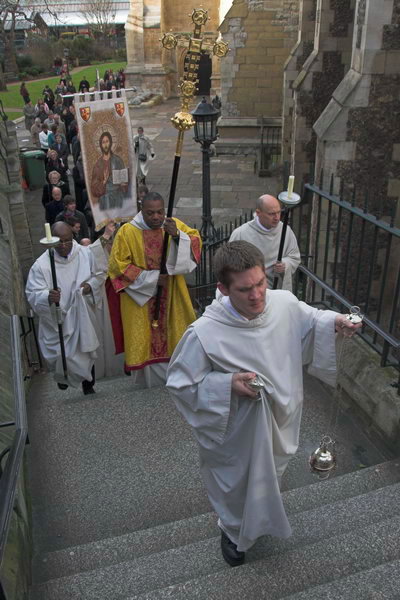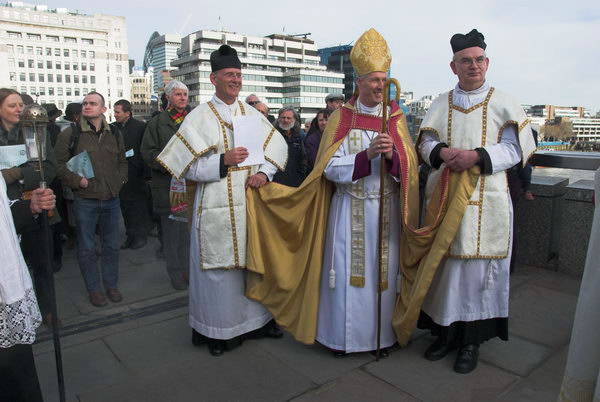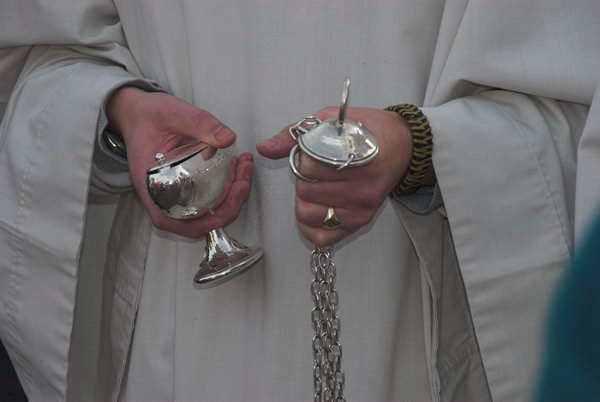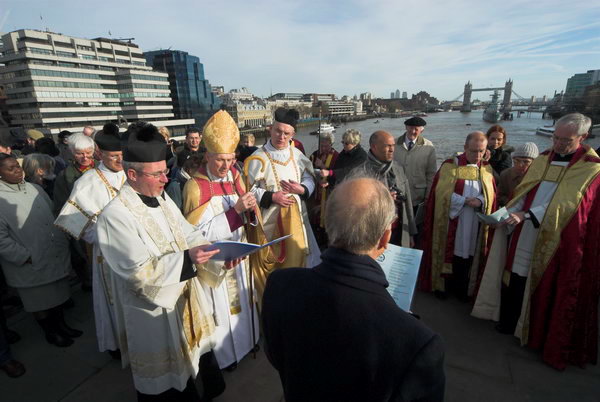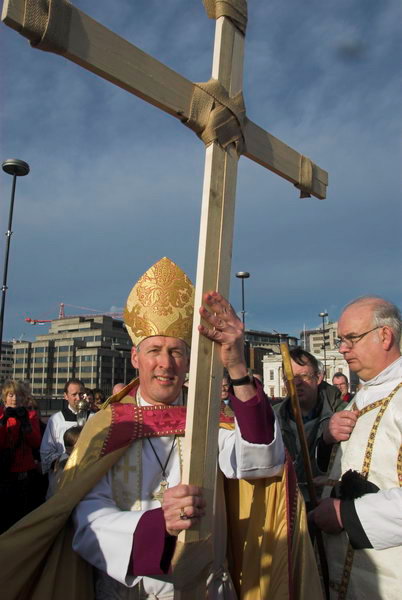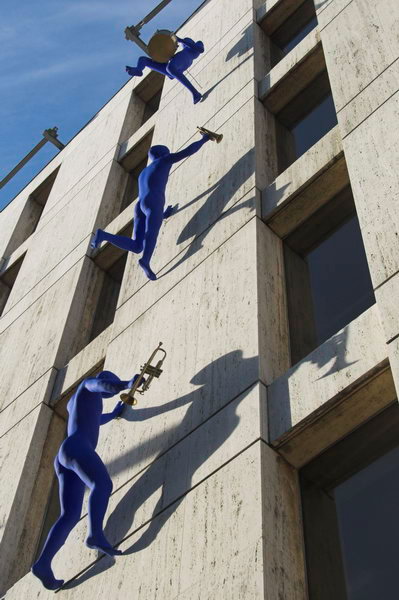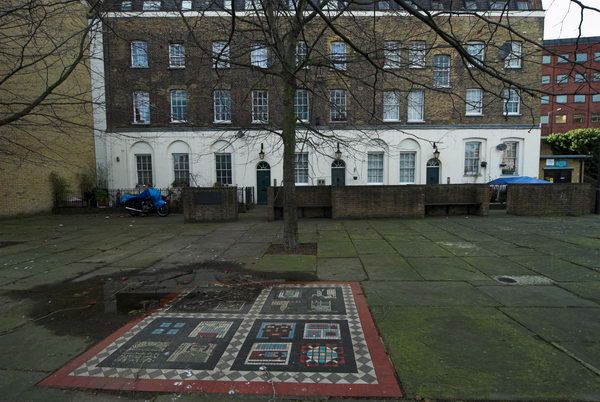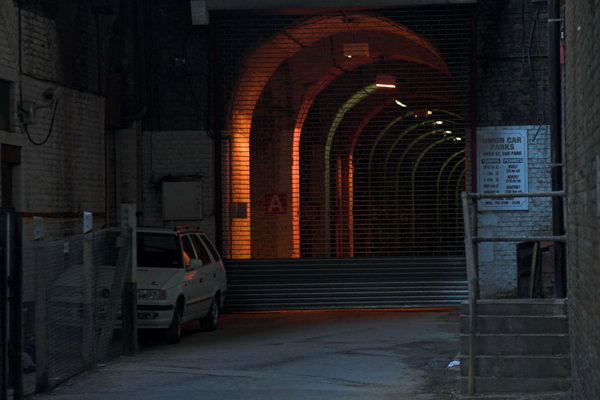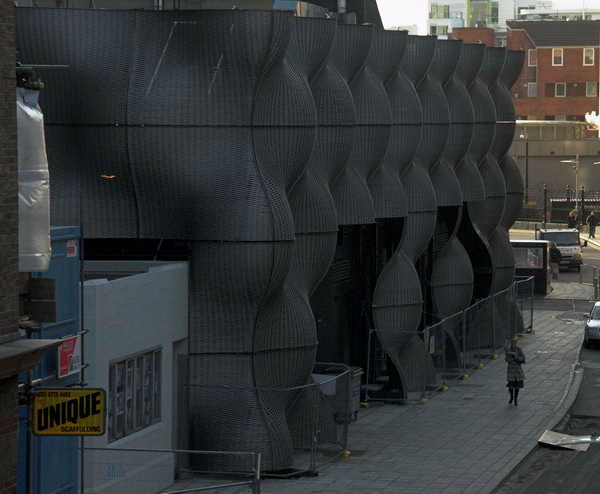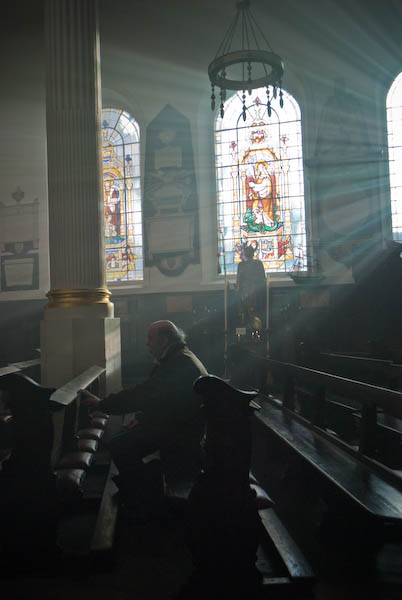More pictures from my walk on 27th January 1989. The previous post on this walk is
Baptist Chapel, Fine Houses, A Queen And A Hospital.
I walked down St Giles Road to the Peckham Road, turning east along it. At the end of the block on the corner of Havill Street is the former Guardians Offices built in an vaguely Art Nouveau style in 1904 for the Poor Law Guardians who ran the workhouse of which it was part. The sundial has the text ‘Do Today’s Work Today‘. The building is Grade II listed.
Under the 1929 Local Government Act the LCC took over the workhouse and infirmary buildings on the site and the same act abolished the Board of Guardians system in 1930. Many workhouses were redesignated as Public Assistance Institutions but Camberwell’s became St James’s Hospital and these offices became the Divisional Health Offices. Southwark Council inherited the building in 1966 but closed its offices here when it moved to Tooley Street in 2009. The building was bought in 2010 by homelessness charity Thames Reach who use it as an Employment Academy. There is also a cafe and tea room on the Havill Street side as well as a Montessori Nursery on the site.
A wider view of the building, still then in use by Southwark Council.
On the east corner of Havill Street is the former Camberwell Town Hall designed in a Classical style by Culpin and Bowers and opened in 1934. It became the town hall for the London Borough of Southwark when this was created in 1965 and was still this when I took my picture. They sold it to a developer in 2009 when the council moved to Tooley St and it was converted into student accommodation for Goldsmiths College.
This row of houses are Grade II listed and were built as separate houses ca 1790. Like the council offices across the road they were also in use as council offices until around 2010 with the house and have also been converted into student accommodation, with a total of 125 bedrooms in the three blocks including also listed Central and East Houses on the north side of Peckham Road and South House.. Joined to them the east end of the block (out of picutre at left) is still the Southwark Register Office.
Southwark Register Office is also Grade II listed and was built around 1790. At some unknown date it was liked to No 32 at right at second floor level, with the curious rooftop extension you see here. Presumably the tall archway in the middle had some purpose, and was possibly at one time without the lower wall and arch. Perhaps giraffes were kept in the gardens behind? Suggestions are welcome in the comments here or on Flickr.
John Passmore Edwards gave money for the erection of the South London Gallery and the College, architect Maurice Bingham Adams, in memory of Lord Leighton. The gallery opened in 1891 and the Technical Institute in 1898. It became one of England’s leading art schools particularly after WW2. The Camberwell School of Arts and Crafts became a part of the London Institute formed by ILEA in 1986 and in 1989 it became Camberwell College of Arts becoming a part of the University of the Arts London in 2004.
The Camberwell School of Arts and Crafts became one of England’s leading art schools particularly after WW2. It became a part of the London Institute formed by ILEA in 1986 and in 1989 it became Camberwell College of Arts becoming a part of the University of the Arts London in 2004.
My next post will start with a couple more pictures of Camberwell College of Arts before taking a walk up Havill Road.
My posts on this walk on 27th January 1989 began at St George’s, Camberwell, Absolutely Board & Alberto.




































